Whether you’re working up a sweat in the garden, caring for a sick child, or planning a home birth, we all face moments it would be nice to be able to whip up a homemade electrolyte drink.
These drinks replenish our bodies with quick energy and the electrolytes lost to sweat (or vomiting and diarrhea). Plus, the mix of sweet, salty, and sour is tasty – helping us stay hydrated when the thought of yet another glass of water has lost its appeal.
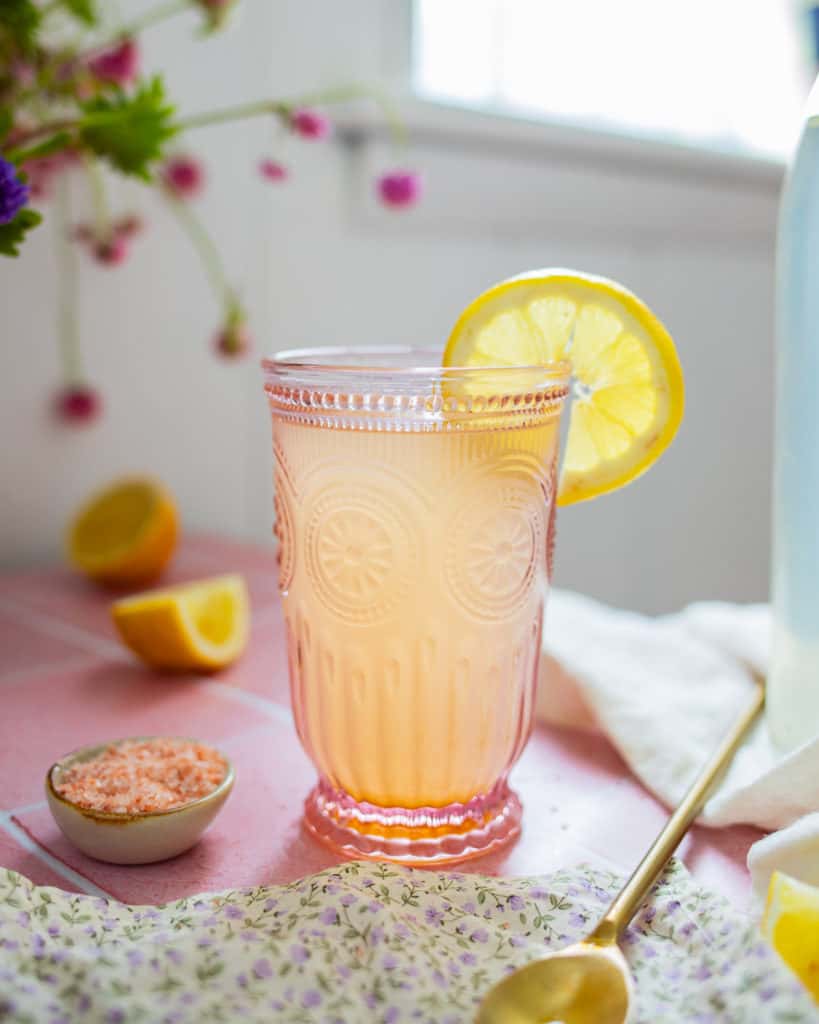
Why Not Pick Up an Electrolyte Drink From the Store?
Once you know how to make your own electrolyte drink, you have the power to mix up a batch whenever you need, saving you a last-minute trip to the store and the worries over refined sweeteners, artificial dyes, and plastic packaging.
It is just plain sad how the big electrolyte brands have made their way into all the school sports with their toxic dyes. How long are we going to let them normalize drinking poison? The most popular brands, including Gatorade and Pedialyte, contain ingredients many of us try to avoid:
- Artificial food dyes including Yellow 5, Yellow 6, and Red 40, linked to hyperactivity in children
- Sugar, which is linked to obesity and higher risk for diabetes and heart disease (Gatorade only)
- Dextrose, a type of highly-refined sugar, typically made from corn or wheat
Electrolyte drinks are surprisingly easy to make using common ingredients that are probably already in your kitchen – so you can make a high-quality homemade electrolyte drink for less than the cost of a bottled sports drink or children’s rehydration formula.
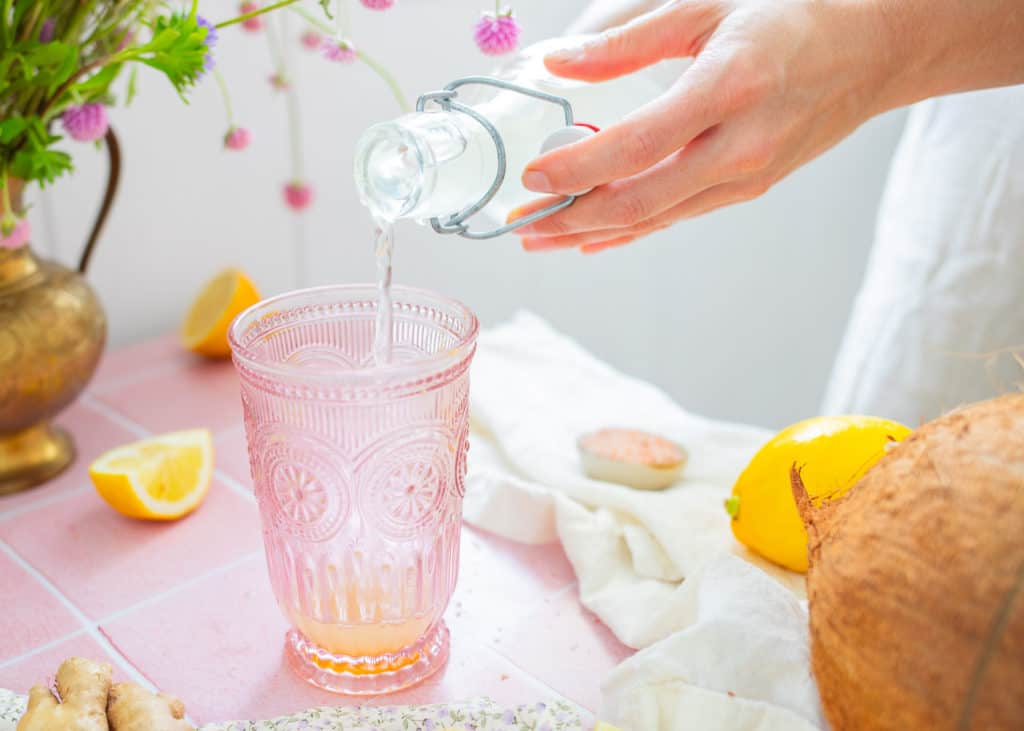
What Are Electrolytes and Why Are They Important?
We all know we need electrolytes. But why? And … what are they exactly?
Electrolytes are minerals – sodium, chloride, calcium, potassium, and magnesium to name a few – that conduct electricity when they’re dissolved in water. Cool, right? And because our bodies use electrical signals to function, we need electrolytes for our nerves, muscles, heart, and brain to work properly.
Electrolytes are also essential for:
- Balancing the amount of water in our bodies
- Transporting nutrients into cells
- Removing waste from cells
- Balancing acidity in the body
Because many plants contain both electrolytes and natural flavor, herbs are a natural fit for a homemade electrolyte drink. This recipe uses ginger, but once you have a handle on the basic ratios, you could use a variety of herbs in this recipe. Mint, hibiscus, or rosemary would be delicious alternatives.

Homemade Electrolyte Drink Ingredients
Ginger: Ginger is rich in the electrolytes calcium, magnesium, sodium, and potassium. It also contains a proteolytic enzyme that reduces inflammation and supports the body’s repair processes – this is why so many people turn to ginger for aches and pains.
Honey: While we need to be careful about sugar intake in today’s world, we do need carbohydrates – especially in situations where it’s difficult to eat, whether that’s a hot day, illness or running a marathon. Raw honey is packed with antioxidants, prebiotics that foster a healthy gut microbiome, and electrolyte minerals, making it a sweet alternative to refined sugar.
Salt: We’ve been cautioned to avoid salt, but we lose sodium and chloride every day through urine and sweat. If you are trying to eliminate salt from your diet, you might not be getting enough salt. Make sure to avoid table salt and go for mineral rich salt.
For this recipe, use the highest quality mineral salt you can find. Regular table salt is refined, meaning it has a higher concentration of sodium chloride as well as added anti-caking agents. Whole salt contains naturally occurring trace minerals in addition to sodium chloride, giving it a more diverse mineral profile. Celtic salt, pink salt and gray salt are some of the high-quality salts available.

Lemon Juice: Lemon juice, like all citrus juices, contains citrate. In cases of serious dehydration (generally caused by severe diarrhea) our internal chemistry can become overly acidic. Citrate is included in rehydration formulas to help correct that imbalance.
Lemon juice also adds a nice tang that complements the sweet and salty flavors of this drink, while boosting the overall electrolyte profile with small amounts of sodium, potassium, calcium, and magnesium.
Coconut Water: Coconut water is nature’s sports drink. It contains natural sugar as well as the electrolytes sodium, chloride, calcium, magnesium, and potassium. In this recipe, I’ve made the coconut water optional so that you can make a delicious and effective homemade electrolyte drink even if you don’t have coconut water on hand. That said, if you’re prepping for a marathon or making “laborade” for birth, you might want to spring for the coconut water. It will give you a drink that’s richer in both electrolytes and natural sugars.
Homemade Electrolyte Drink Recipe
Ingredients
- 1 tbsp ginger honey (or mix 1 tbsp honey with 1/2 tsp powdered ginger) You can also use hibiscus or elderflower instead of the ginger if you would like a more cooling electrolyte drink
- A pinch of high-quality unrefined salt
- 2 tbsp fresh lemon juice
- 1 cup coconut water can substitute with plain water
Instructions
- Mix the ginger honey, salt, and lemon juice well, warming gently if needed.
- Add your coconut water or water and mix well.
- Enjoy!
An Easy, Tasty Switch
So many health-conscious people seem to have a blind spot when it comes to sports drinks and children’s rehydration drinks. While these do have less sugar than soda and can be truly beneficial, we don’t need to buy them when they’re loaded with refined sweeteners, dyes, artificial ingredients, and packaged in plastic. We have options!
Let’s help our young ones to learn something different than drinking poison to try and feel better. Volunteer to bring an Igloo of after-game electrolyte drink and put lots of orange and strawberry slices as garnish so the kids will be attracted to it.
It’s much more aligned with the earth to mix up a homemade electrolyte drink with wholesome, health-giving ingredients. This recipe makes the switch easy and delicious, empowering us to care deeply for our bodies and teach our loved ones to do the same.
If you want to shift the narrative that feeling better comes from taking over-the-counter drugs, join me in exploring 23 medicine-making techniques that use common kitchen herbs. My online course, Herbal Kitchen Remedy Solutions, has transformed the way thousands of students practice wellness in their homes, and can empower you to take charge of your family’s health too.
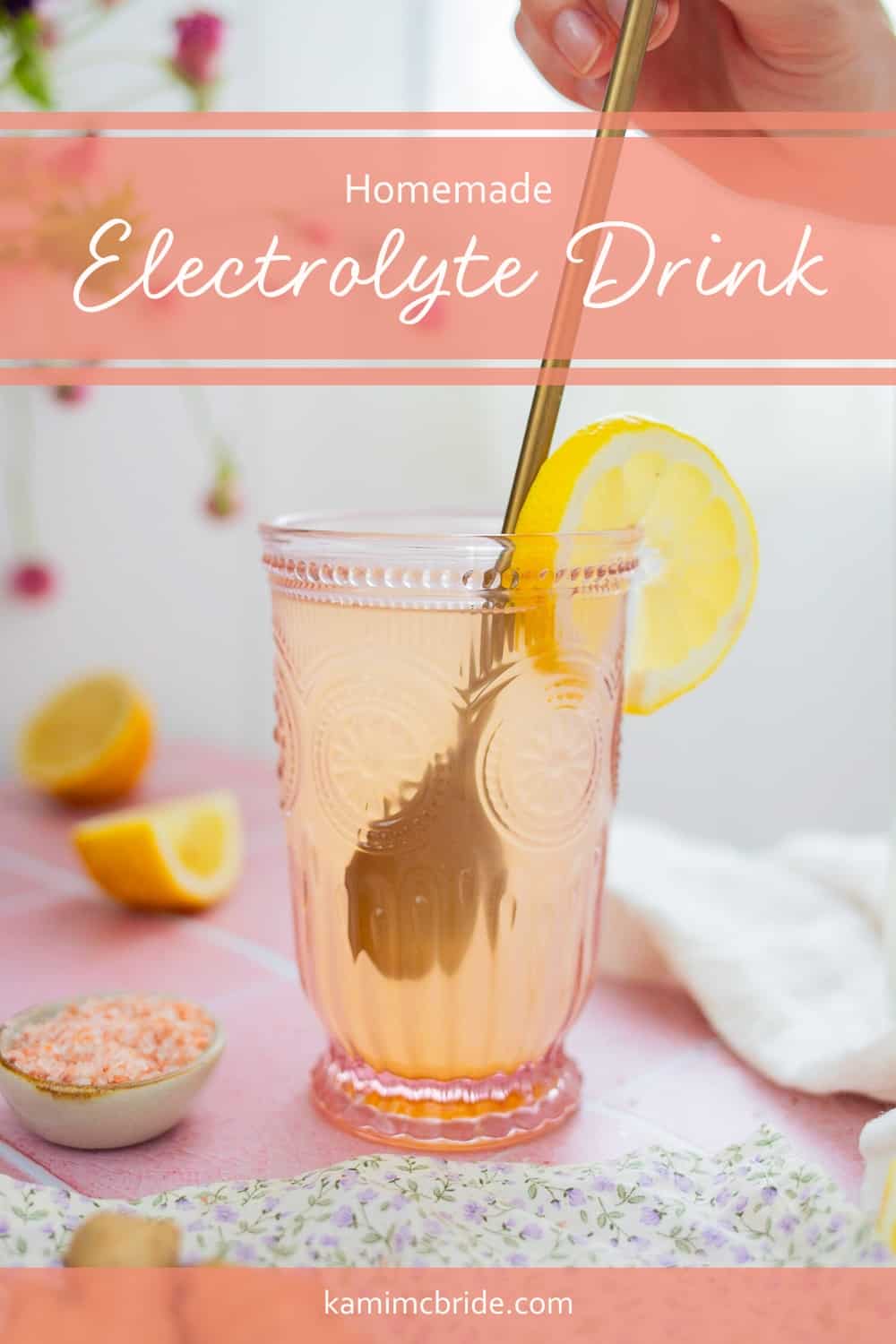

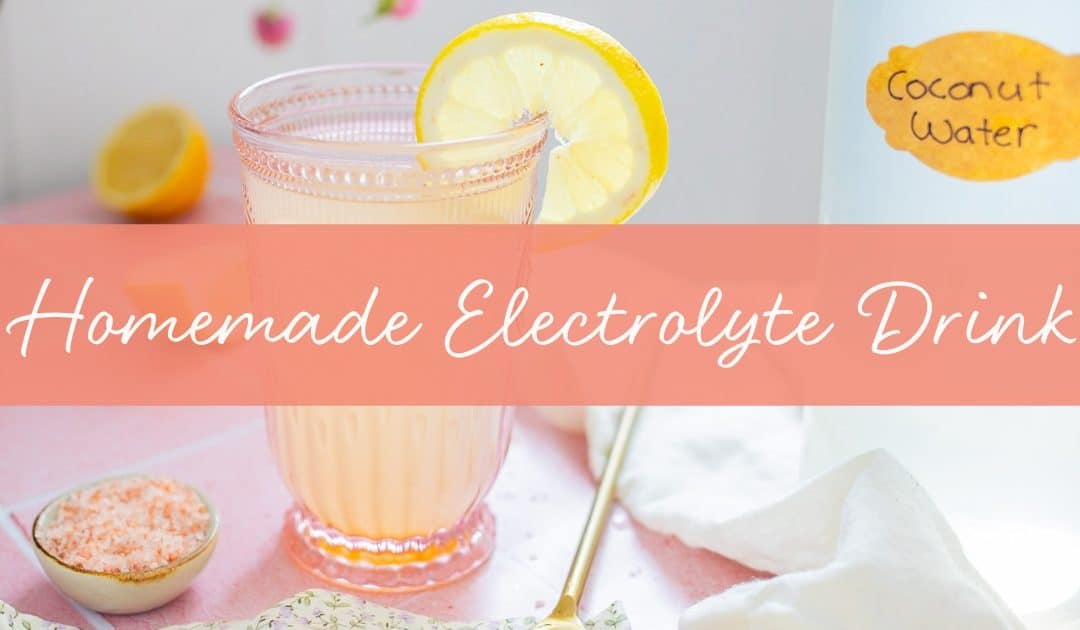
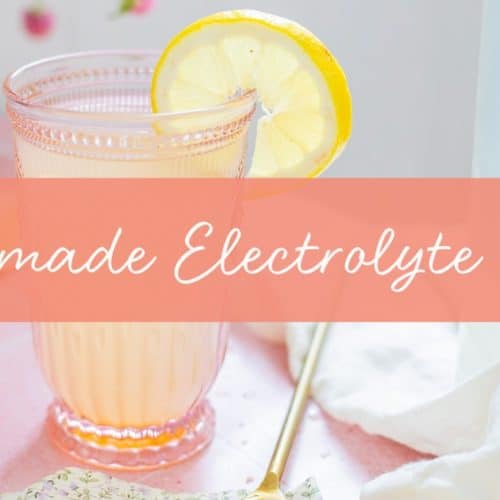



Kami would mineral water be better than regular water in place of coconut water?
It depends on your taste. The key is to be drinking high electrolyte liquids!